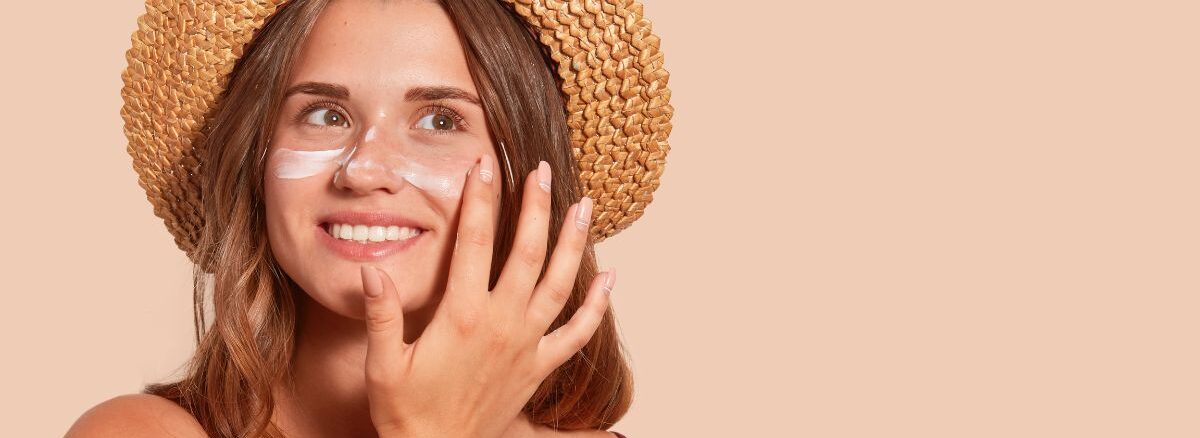As with all cosmetic products, the sunscreen market is vast and overwhelming. The sunscreens are available as lotions, sprays, gels, aquagel, fluids etc . Then one gets bogged down by the SPF number and PA rating, whether to choose chemical or physical sunscreen. To further add to the confusion is organic and plant based sunscreens. One is in a dilemma to choose which one from this long list. Say hello to clear, healthy skin with the expert care and guidance of our Skin Specialist in Ludhiana (Dr. Jastinder Gill).
Hence, the question is what’s the most effective sunscreen and which one to buy. The ultimate goal of the sunscreen is to protect the skin from the harmful UV Rays from the sun (both UVA and UVB). It should prevent sun damage, which will also work as anti-aging, keep the skin blemish free and prevent skin cancer. Though skin cancer is not prevalent in the Indian subcontinent, but in the caucasian skin, one of the major sequel of sun damage is skin cancer.
According to me the best sunscreen is the one which you apply daily and regularly, it gives broad spectrum protection from both UVA & UVB Rays, in today’s times we also need protection from the blue light emitted by our devices. It should be water resistant. An SPF of 30, gives very good protection to our Indian skin, no harm in using an SPF 50+, as majority of the sunscreen brands available are 50+ (which is just a marketing trend which has caught everyone’s fancy). So make the right choice, you can experiment with a few brands, before settling with one brand which you feel comfortable wearing on a daily basis and feels good on your skin. For more information regarding sunscreens, consult Dr. Jastinder Gill, best Dermatologist in Ludhiana.
Types of Sunscreen
The sunscreen fall into two categories –
- Chemical sunscreen,
- Physical sunscreen.
1. Chemical sunscreen
The chemical sunscreens are the ones which have a combination of the following ingredients – octinoxate, avobenzone, oxybenzone etc. These protect the skin from UV rays by absorbing the UV light, and not let the rays cross the skin barrier. The chemical sunscreens mainly protect from the UVB Rays.
2. Physical sunscreen
The active ingredients in the physical sunscreens are composed of minerals (as the name suggests) – zinc oxide and titanium oxide. The sunscreen may have either of the two or can be a combination of both zinc oxide and titanium oxide. These are also known as physical sunscreens as they physically block the UV Rays, the minerals reflect back the sun rays which fall on the skin’s surface. All mineral sunscreens provide broad spectrum protection from both UVA and UVB rays.
Which Type of Sunscreen is Better?
Both, chemical and physical sunscreens have been available for a long time, though chemical sunscreens were more popular as they were more compatible for applying and blended with the skin. The physical sunscreens formed a thick white layer on the skin’s surface, which was not cosmetically acceptable. You would have seen cricketers in the late 80s and early 90s with a thick white film on their cheeks, which was a mineral sunscreen with zinc oxide as the active ingredient. But as the technology advanced, with the availability of micronised minerals, the physical sunscreens became cosmetically more acceptable. Hence we now see major hype created for the mineral sunscreens.
Are Sunscreens Safe?
Both, chemical and physical sunscreens are safe and needed for complete protection from the sun. Though mineral sunscreens are better suited for people with sensitive skin and people who are photosensitive (mining the skin begins to get red and the person feels a burning sensation on exposure to the sun). The mineral/physical sunscreens are less irritating than the chemical sunscreens and hence less chances of an allergic reaction or sensitivity. individuals who have rosacea or eczema or atopic dermatitis, should preferably wear a physical sunscreen. These are also the preferred choice of sunscreen for children and pregnant women. But there is no need to fret over chemical sunscreens, as the ingredients used in chemical sunscreens are US FDA approved. They have been in use for many decades now and they have an excellent safety record, no carcinogenic or other adverse effect has not been documented till date. A chemical sunscreen is safer than no sunscreen, as UV Rays from the sun are more damaging as they are carcinogenic (leading to skin cancer) and cause premature aging (fine lines and wrinkles, destroy the collagen which leads to sagging), exposure over the period leads to sun spots/age spots and blemishes. The UV Rays are the major cause behind facial pigmentation.
Interesting Fact
Coral Reef Alliance, recommends the use of mineral sunscreen which should be non nano size (particle size more than 100 nanometers) as these are considered to be safe for marine life and corals. Chemical sunscreens were found to be toxic to the coral reef, causing damage to the coral.
Important Tips
Many people observe that despite wearing a sunscreen , they get sun burn, the reason being –
- Not wearing a broad spectrum sunscreen
- Not re applying the sunscreen after 2-3 hours. the beneficial protection of the sunscreen
- starts to wear off after 2-3 hours, hence its very essential to re apply the sunscreen.
Do wear sunscreen when working indoors, working on desktops/laptops, as the strong indoor lighting and the blue light emitted by gadgets (even smart phones) is well known to damage the skin.
Most asked question –
Question: Why do I need to wear sunscreen, my grandparents never used sunscreen?
Answer: The answer is their lifestyle (they didn’t work in arterial lights as we do), even if they worked outdoors, they did so in early morning hours or late evening, when the UV Rays are not as damaging, as they are from 11 am to 3 pm.
And most importantly, because of the environmental changes, the ozone layer (which filtered the UV Rays) has decreased and hence the intensity of the UV Rays has increased and that leads to more harmful effects.
Hence the importance of sunscreens now.

